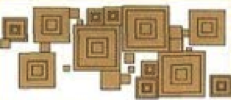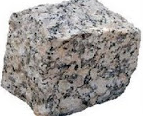As lavas do Complexo Vulcânico de Lisboa, surgiram de um evento tectono-magmático, que ocorreu há cerca de 72 milhões de anos (no Campaniano, Cretácico Superior).
O Complexo vulcânico de Lisboa ocupa uma extensão aproximada de 200km2. É provável que os aparelhos vulcânicos alimentadores se situariam na região da serra de Sintra e eventualmente na região de Loures e que originaram as formações basálticas e piroclásticas.
Esta Earthcache encontra-se num provável cone vulcânico secundário do Complexo Vulcânico de Lisboa.
Após o enquadramento geológico, vamos agora observar e caracterizar as rochas do afloramento, que se encontram nas coordenadas indicadas.
As rochas magmáticas resultam do arrefecimento e da solidificação do magma.
- Se a consolidação ocorre em profundidade são designadas rochas plutónicas ou intrusivas.
- Se a consolidação ocorre à superfície as rochas são designadas rochas vulcânicas ou extrusivas.
A natureza dos magmas e as diferentes condições de consolidação das rochas influenciam as suas características, nomeadamente a cor, a textura e a composição química e mineralógica.
Caraterização em relação à cor:
A cor da rocha está associada aos minerais mais abundantes na sua composição. Os minerais ricos em sílica e alumínio, tal como o quartzo, os feldspatos potássicos e as micas brancas, proporcionam uma rocha de cor clara, designando-se minerais félsicos.
Minerais como a piroxena, as olivinas, a biotite, como são ricos em ferro e magnésio proporcionam uma rocha de cor escura e designam-se minerais máficos.
Assim podemos classificar as rochas em relação à cor:
- Rochas leucocratas: são rochas claras, ricas em minerais félsicos e pobres em minerais máficos.
- Rochas mesocratas: rochas de cor intermédia, nas quais os minerais félsicos e máficos ocorrem em proporções idênticas.
- Rochas melanocratas: rochas escuras ricas em minerais ferromagnesianos (>60%), máficos.
Caraterização em relação à textura:
Textura é o aspeto geral da rocha em relação ao tamanho, forma e disposição dos minerais constituintes.
|
Tipos de textura
|
Desenvolvimento dos cristais
|
Aspeto macroscópico
|
Exemplo
|
Fanerítica
Se os diferentes cristais que constituem a rocha se distinguem uns dos outros a olho nú (macroscopicamente). Resulta de um arrefecimento lento do magma que permite a organização da matéria cristalina.
|
 |
 |
Granito
Gabro
Diorito
|
Afanítica ou agranular
Se a rocha é formada, total ou parcialmente, por cristais tão pequenos que não se distinguem uns dos outros macroscopicamente. Resulta de um arrefecimento relativamente rápido do magma, que não permite o crescimento de cristais.
|
|
|
Basalto
Riólito
Andesito
|
Vítrea
Se a rocha é totalmente constituída por matéria amorfa (não cristalizada). Aspeto semelhante ao vidro. Resulta de um arrefecimento muito rápido do magma.
|
Sem desenvolvimento cristalino.
|
|
Obsidiana
|
Fonte: Bioterra (Terra, Universo da Vida – Geologia)
Caraterização em relação à composição química:
A composição química depende dos minerais que constituem as rochas, ou seja, da sua composição mineralógica. A caracterização é efetuada de acordo com a percentagem de sílica existente nas rochas.
|
Classificação
|
Teor de sílica (%)
|
Exemplos
|
| Ácidas |
>65
|
Granito
|
| Intermédias |
>52<65
|
Diorito e andesito
|
| Básicas |
>43<52
|
Gabro e basalto
|
Fonte: Biosterra (Terra, Universo da Vida – Geologia)
Nas coordenadas indicadas encontra-se um afloramento rochoso, caracteriza as suas rochas, respondendo às seguintes perguntas para o email (geobumblebee@gmail.com).
| PERGUNTAS |
Pergunta 1 - Classifique as rochas em relação à cor.
Pergunta 2 - Qual é o tipo de textura das rochas?
Pergunta 3 – Classifique as rochas em relação à sua composição mineralógica.
|
Caso as respostas estejam corretas o log mantem-se, caso não, serão contactados posteriormente.

The lavas of the Volcanic Complex of Lisbon were extruded in atectono-magmatic event that occurred ca. 72 million years. This volcanic complex, made up of basalts and pyroclastic formations, outcropping in the greater Lisbon area occupies an area of approximately 200km2 and it is believed that the feeders were situated in the Sintra and Loures regions.
This EC takes you to a probable secondary volcanic cone.
Magmatic rocks result from the cooling and solidification of magma.
- If consolidation occurs at depth they are called plutonic or intrusive rocks.
- If consolidation takes place onthe surface, rocks are called extrusive or volcanic.
The nature of the magmas and the different conditions of the consolidation of rocks affect their characteristics, including color, texture, and chemical and mineralogical composition.
Color characterization:
The color of the rock is associated to the most abundant mineral in composition.
The ones rich in silica and aluminum minerals such as quartz, potassium feldspar and white mica, give the rock a light colour and we say that the minerals are felsic.
Minerals such as pyroxene, the olivine, biotite (dark mica) thyat are rich in magnesium and iron give the rock a dark color and we say that the minerals are mafic.
Classification rocks by their color:
- Leucocratic rocks: are clear, rocks rich in felsic minerals and poor in mafic minerals.
- Mesocratic rocks: rocks intermediate color, in which felsic and mafic minerals occur in identical proportions.
- Melanocratic rocks: Dark rocks rich (>60%) in ferromagnesian mafic minerals.
Textural characterization:
Texture is the general aspect of the rock relative to the size, shape and arrangement of the constituent minerals
|
Types texture
|
Distribution of crystals
|
Macroscopic appearance
|
Example
|
Phaneritic If the different crystals that make up the rock are distinguished from each other by the naked eye (macroscopic). This results from the slow cooling of magma that enables the organization of crystalline matter.
|
 |
|
Granite
Gabro
Diorito
|
Aphanitic or agranular If the rock is formed, wholly or partly, of such small crystals that are not distinguished from each other macroscopically. It results from a relatively fast cooling of the melt, which does not allow the growth of large crystals.
|
|
|
Basalt
Riólito
Andesito
|
Vitreous If the rock is completely made up (not crystallized) of amorphous matter. It has a glass-like appearance and is the result of a very rapid cooling of magma.
|
No crystalline
distribution
|
|
Obsidian
|
Source: Bioterra (Terra, Universo da Vida – Geologia)
Chemical characterization:
The chemical composition of the rock depends on the constituent minerals, or its mineral composition.
The characterization is done in accordance with the percentage of silica in the rocks.
|
Classification
|
Si content (%)
|
Examples
|
| Acid |
>65
|
Granite
|
| Intermediate |
>52<65
|
Diorito and andesito
|
| Basic |
>43<52
|
Gabro and basalt
|
Source: Biosterra (Terra, Universo da Vida – Geologia)
In the given coordinates is a rocky outcrop, featuring their rocks, answering the following questions to the email (geobumblebee@gmail.com)
| QUESTIONS |
|
Question 1 - Classify the outcrop of rocks by their color.
Question 2 - From the above table, what do you think is the classification of the rocks based on their textural features?
Question 3 – Characterization the rocks in relation to their mineralogical composition.
|
If the answers are correct your log stands, if not, you will be contacted later.